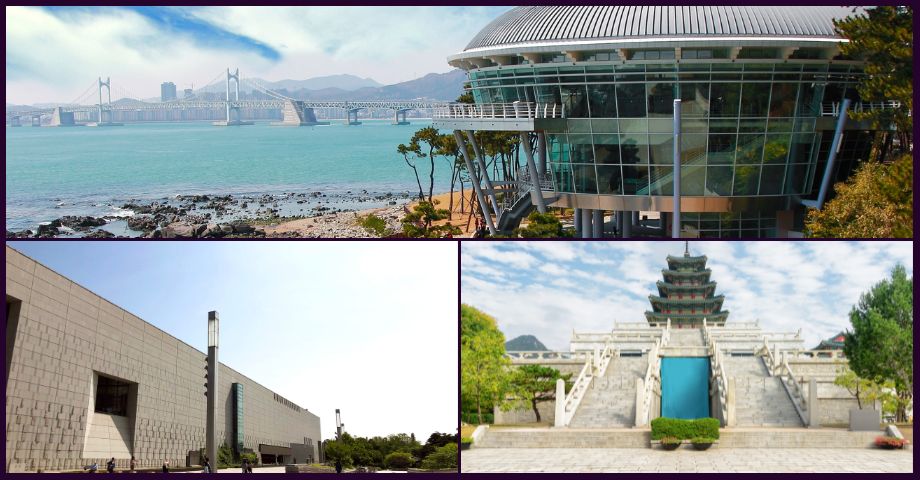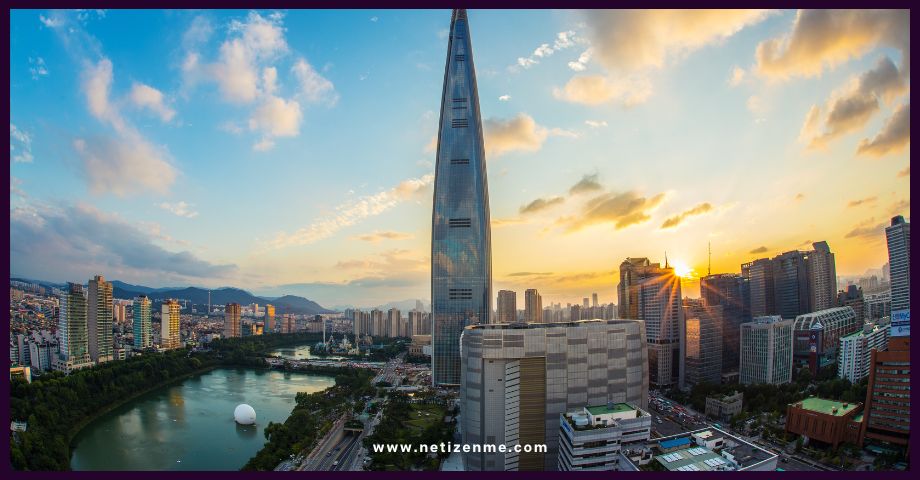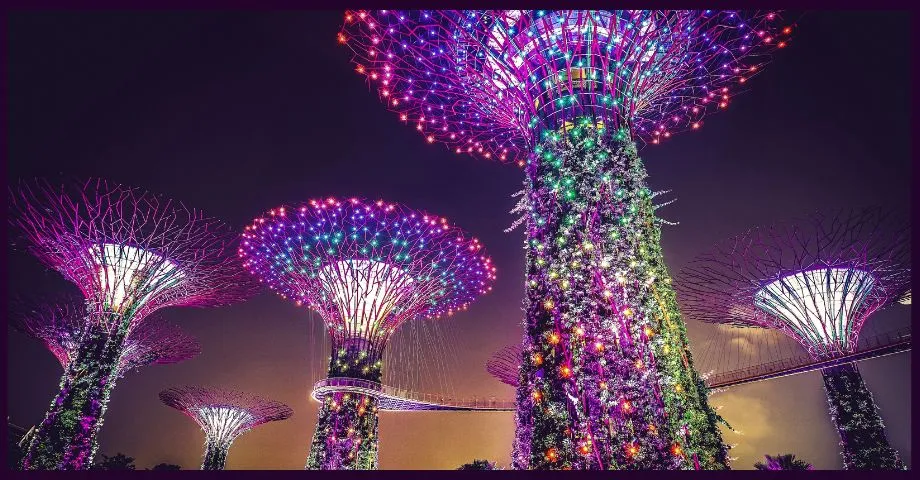Korea’s vibrant history and culture come alive through its diverse array of museums. In this article, I will list the top 8 must-visit museums in Korea according to my ranking. Read along to discover the essential museums in Korea, offering a blend of history, culture, and art. I hope this article will help you plan your visit to these cultural hubs and delve into Korea’s rich heritage.
Cultural Kaleidoscope of Museums in Korea
War Memorial of Korea: A Chronicle of Valor
The War Memorial of Korea, situated in Yongsan-gu, Seoul, is a significant institution dedicated to preserving materials related to the Korean War. Established on June 10, 1994, by the War Memorial Service Korea Society, it honors the noble sacrifice of patriotic martyrs. With around 33,000 artifacts, of which 10,000 are on display, the museum offers a comprehensive look at Korea’s wartime history.
Its six indoor halls, including the Expeditionary Forces Room and the War History Room, provide insightful exhibits. Additionally, the outdoor exhibition features impressive large-sized weapons. Visitors of all ages can engage in 20 educational programs and cultural events, ranging from military music performances to drawing contests.
The War Memorial’s character, ‘Mudori,’ symbolizes the nation’s protection with a helmet and peace with a bay leaf. Whether you’re a history enthusiast or simply curious, a visit to this iconic landmark promises an enriching experience filled with learning and appreciation for Korea’s heritage.
www.warmemo.or.kr mfis.mpva.go.kr
Trick Eye Museum: Whimsical Wonders in Seoul
For a playful twist, visit the Trick Eye Museum at Hongik University Station. Immerse yourself in 2D art transformed into 3D illusions. Simple guides help you become part of the exhibits, offering a delightful diversion for all ages.
The Trick Eye Museum introduces a revolutionary blend of culture and entertainment, offering visitors an immersive experience like no other. Through its innovative approach, guests are transported into a world of 3D optical illusion paintings and installations.
Derived from the term ‘Trick of the eye,’ the museum employs the traditional art technique of Trompe-l’oeil to bring two-dimensional paintings to life with captivating three-dimensional effects. As visitors explore the museum, they are encouraged to interact with the artworks, stepping inside the Trick Eye paintings to craft their imaginative narratives.
What sets the Trick Eye Museum apart is its pioneering use of AR (Augmented Reality) technology, elevating the experience to new heights. By downloading the TRICEYE app, visitors can unlock an enhanced, mind-bending encounter with the artwork.
At the Trick Eye Museum, there are no restrictions – guests are invited to touch and engage with all exhibits freely. Here, visitors can immerse themselves fully in the artworks, assuming roles as directors, actors, and photographers, capturing surreal moments that unfold before their very eyes.
Step into a world of fantasy and wonder, both in person and through the lens of your camera, as the Trick Eye Museum invites you to witness magical stories come to life right before your eyes.
www.trickeye.com/seoul/en/AboutTrickeye
Seoul Museum of History: Tracing Seoul’s Evolution
The Seoul Museum of History offers a comprehensive journey through the rich tapestry of Seoul’s history and culture, spanning from ancient times to the present day, with a particular focus on the illustrious Joseon era. Through its extensive collection of artifacts and materials, the museum endeavors to foster cultural awareness and forge stronger community bonds.
By meticulously collecting, preserving, researching, and showcasing historical relics and documents, the museum plays a pivotal role in promoting Seoul’s heritage to both residents and a global audience. From the city’s prehistoric origins to its modern evolution, the museum provides a vivid depiction of Seoul’s captivating history.
In addition to its permanent exhibitions, the museum regularly hosts special showcases, offering visitors the opportunity to delve deeper into specific aspects of Seoul’s past. Furthermore, the Seoul Museum of History extends its reach through its online platform, Seoul History Archives, which grants free access to digitized museum materials for both personal and commercial use, ensuring that the city’s rich history remains accessible to all.
www.museum.seoul.kr
Leeum Samsung Museum of Art: A Dual Artistic Odyssey
The Leeum, Samsung Museum of Art, nestled in Hannam-dong, Yongsan District, Seoul, South Korea, is a cultural gem overseen by the Samsung Foundation of Culture.
Comprising two distinct sections, the museum beautifully juxtaposes traditional Korean art with contemporary masterpieces. The initial portion, designed by Swiss architect Mario Botta, showcases an array of traditional Korean treasures, including 36 national treasures. Visitors are captivated by the assortment of landscapes, folk paintings, ceramics, and Buddhist artifacts housed within the geometrically striking Museum 1.
Adjacent to this, Museum 2, envisioned by acclaimed architects Jean Nouvel and Rem Koolhaas, boasts a collection of modern and contemporary art from both Korean and international artists. Here, visitors encounter renowned works by artists such as Damien Hirst, Andy Warhol, and Yves Klein, set against the backdrop of innovative architectural design.
The museum’s grounds are equally captivating, featuring a sunken garden adorned with birch trees and ferns, as well as a Sculpture Garden showcasing an array of sculptural exhibits, including pieces by the iconic Louise Bourgeois. With its blend of art, architecture, and natural beauty, the Leeum Museum offers an enriching cultural experience for visitors of all backgrounds.
www.leeumhoam.org
National Folk Museum of Korea: Cultural Immersion in Gyeongbokgung
Situated within the grandeur of Gyeongbokgung Palace, the National Folk Museum of Korea offers a captivating journey into the everyday lives of Korean people throughout history. With a focus on historical artifacts, the museum provides insight into domestic routines, agricultural practices, and cultural beliefs of the Korean populace.
Divided into three permanent exhibitions and complemented by two special showcases, visitors are immersed in a rich tapestry of Korean heritage. From household items to agricultural tools, each artifact tells a story of bygone eras, allowing visitors to gain a deeper understanding of Korea’s cultural evolution.
Beyond the exhibitions, the museum offers additional amenities such as a library, souvenir shop, and other subsidiary facilities, enhancing the overall visitor experience. Whether delving into the intricacies of traditional lifestyles or exploring cultural beliefs, the National Folk Museum of Korea invites visitors to embark on a journey of discovery through the annals of Korean history.
www.nfm.go.kr
Seodaemun Prison History Museum: Echoes of Independence Struggles
The Seodaemun Prison History Hall, situated in Seoul’s Seodaemun District, stands as a poignant reminder of Korea’s tumultuous past. Originally constructed in 1907, the prison has witnessed significant historical events throughout its existence.
During the Japanese colonial period, the prison served as a tool of oppression, incarcerating Korean independence activists who fought against colonial rule. Notable figures such as Kim Ku and Ryu Gwansun were among the thousands imprisoned here, enduring unspeakable hardships and torture.
Following Korea’s liberation in 1945, the prison continued to be utilized by the South Korean government until its closure in 1987. In 1992, the site was reborn as the Seodaemun Prison History Hall, a solemn tribute to the sacrifices made by those who fought for Korea’s independence.
Today, visitors to the museum can explore seven preserved buildings within Seodaemun Independence Park, including the original prison structures and the execution site. Through immersive exhibitions and educational programs, the History Hall seeks to honor the legacy of Korean patriots and educate the public on the importance of preserving the nation’s hard-won freedom.
sphh.sscmc.or.kr
National Museum of Korean Contemporary History: Navigating the Modern Era
The National Museum of Korean Contemporary History, inaugurated on December 26, 2012, serves as a comprehensive chronicle of Korea’s modern journey, spanning from the inauguration of Incheon Port to the present day. Through meticulously curated exhibitions and educational initiatives, the museum delves into the nation’s transformation over time, shedding light on pivotal historical events and societal shifts.
Comprising four distinct exhibition halls, the museum offers a multifaceted exploration of Korea’s modern history. Visitors can embark on a captivating journey through the Prelude to the Republic of Korea, the Foundation of the Republic of Korea, the Development of the Republic of Korea, and the Modernization of South Korea, toward the World.
Moreover, the museum’s Korean History Dream Village provides an interactive learning environment for children, fostering a deeper understanding of modern and contemporary history through hands-on programs. In addition to its permanent collections, the museum regularly hosts special exhibitions and cultural programs, further enriching the visitor experience and fostering a greater appreciation for Korea’s rich historical tapestry.
www.much.go.kr
National Museum of Modern and Contemporary Art: Global Art Exploration
The National Museum of Contemporary Art, Korea (MMCA) stands as a beacon of contemporary artistic expression, with four branches spanning Gwacheon, Deoksugung, Seoul, and Cheongju. Established in 1969, it holds the distinction of being the sole national art museum in Korea dedicated to modern and contemporary art, both domestic and international.
The Gwacheon branch boasts an expansive area of 73,360 m² spread across three floors. Embodying elements of traditional Korean architecture, its unique spiral-formed interior houses notable works such as Nam June Paik’s iconic video artwork, Dadaigseon. The museum’s outdoor sculpture park offers a serene setting for contemplation and exploration.
In Deoksugung, the museum’s first branch provides a platform for artistic expression in the heart of Seoul. Featuring four exhibition halls, rest zones, and art shops.
The Seoul branch seamlessly blends architectural innovation with artistic vision. Embracing the Madang concept, it integrates the exterior and interior spaces, offering a dynamic environment for both artistic engagement and public leisure.
Completing the quartet, the MMCA Cheongju serves as a vital center for art conservation and education. It provides essential training for professionals in the field of art conservation, safeguarding the cultural heritage for future generations.
www.mmca.go.kr/eng
Explore Korea’s Top 8 Must-Visit Museums
Korea’s museums serve as powerful custodians of the nation’s heritage, offering a vibrant mosaic of its history, contemporary life, and artistic ingenuity. From the poignant narratives of wartime struggle to the playful allure of optical illusions, each museum provides a distinct window into Korea’s multifaceted identity.
I hope this list of 08 Must-Visit Museums in Korea can help you plan your next Korean travel itinerary.
Plan your visit to these cultural treasures and embark on a journey through time, uncovering the captivating stories and diverse perspectives that they hold. Whether delving into the depths of Korean history or immersing oneself in the cutting-edge world of contemporary art, a trip to these museums promises an enriching and unforgettable experience.

This article is written by:

Eunjin Kim
With a background in art and design, driven by her passion for artistic expression and cultural promotion, Eunjin is on a mission to shine a spotlight on the vibrant heritage and irresistible charm that South Korea has to offer.




